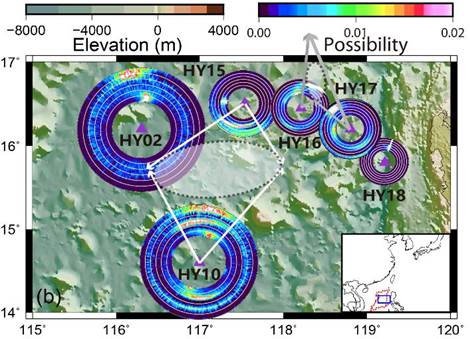Han Xiao1, Mei Xue1 , Ting Yang1,2, Chenguang Liu3 , Qingfeng Hua3, Shaohong Xia4 ,Haibo Huang4, Ba Manh Le1, Youqiang Yu1 , Da Huo1 , Mohan Pan1, Lin Li1, and Jinyao Gao5
1 State Key Laboratory of Marine Geology, Tongji University, Shanghai, China,
2 Department of Ocean Science & Engineering,
Southern University of Science and Technology, Shenzhen, China,
3 The First Institute of Oceanography, State Oceanic Administration, Qingdao, China,
4 South China Sea Institute of Oceanology, Chinese Academy of Sciences, Guangzhou, China,
5 Second Institute of Oceanography, State Oceanic Administration, Hangzhou, China
Abstract:
It has long been recognized that ocean gravity waves can generate microseisms through their interactions and coupling with the solid earth. Their generation mechanisms, wave types, and propagation have been studied and debated intensively. In this study, we focus on the characteristics of microseisms in South China Sea (SCS) and compare them with globally observed microseisms. We use data from six ocean bottom seismometers, 10 publicly available broadband land seismometers near SCS, and a reanalyzed global wave height model from 1 May 2012 to 20 August 2012 (UTC), the time span of ocean bottom seismometers’ data. We apply three techniques including power spectral density, correlation, and frequency dependent polarization analysis. Our results show that (1) microseisms observed in SCS are dominated by sources from adjacent oceans, instead of the common global sources from the Pacific, Atlantic, or Indian Ocean; (2) the split of double-frequency microseisms (DFMs) is observed in SCS, especially on land stations: the sources are located near the central sea basin for long-period DFMs (0.1–0.25 Hz) and are local near stations for short-period DFMs (0.25–0.5 Hz); (3) typhoons both strengthen microseisms and affect the source locations of microseisms with the biggest influence on the short-period DFMs; and (4) microseisms in or near SCS are a mixture of Love and Rayleigh waves and the relative dominance of Love and Rayleigh waves changes with locations.
| |  |
Full article: https://doi.org/10.1029/2017JB015291


